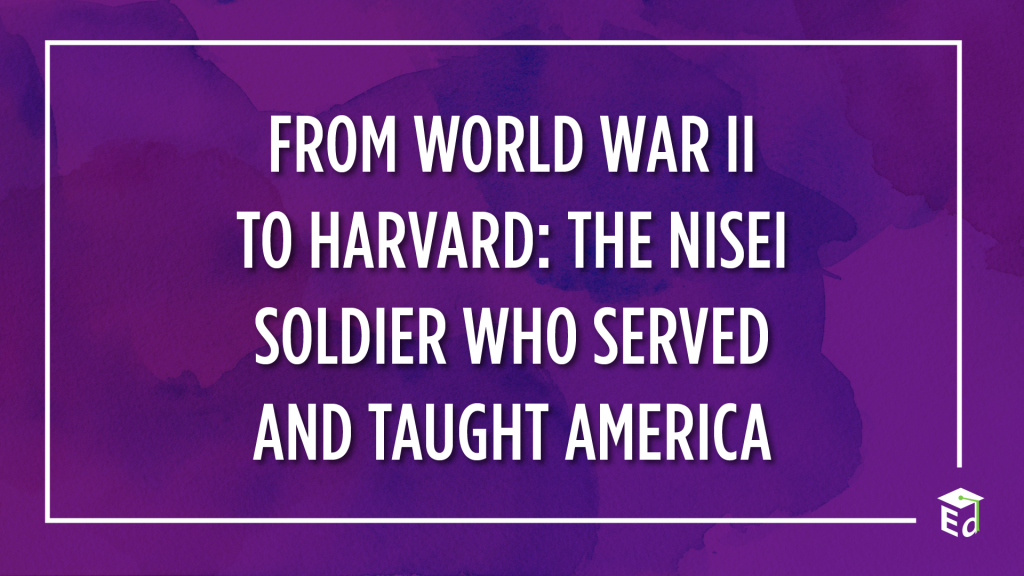From World War II to Harvard: the Nisei Soldier who served and taught America

On December 7, 1941, Japanese planes raided the U.S. Naval Base Pearl Harbor in Hawaii. The massive surprise attack thrusted America into World War II. Following the attack, government suspicion arose around Americans of Japanese descent. A few months later, on March 29, 1942, Lieutenant General John L. DeWitt of the Western Defense Command issued Public Proclamation No. 4, which forced the evacuation and detention of West Coast residents of Japanese American ancestry. Approximately 120,000 Japanese Americans were sent to concentration camps in the United States between 1942 and 1945.
Despite the growing racism against Japanese Americans following Executive Order 9066 and Public Proclamation No. 4, many Nisei, or second-generation Japanese Americans, joined to fight with Allied forces in 1943. The 442nd Regimental Combat Team was an all-Japanese American unit activated nearly a year after President Franklin Roosevelt signed EO9066. The unit included volunteers from Hawaii and others from concentration camps, where their families remained imprisoned.
The 442nd became the most decorated unit for its size and length of service in the U.S. Army during World War II. Of the 18,000 or so men that served in the 442nd, the unit earned 21 Medals of Honor, 9,486 Purple Hearts, 560 Silver Stars, and many more decorations. Despite racism and their families imprisoned, the 442nd fought for their ideals of freedom and left a legacy that is unmatched.
Among them was Susumu Ito, a Nisei from Stockton, California. He was drafted into the military in 1940. After the attack on Pearl Harbor, Ito’s family was sent to an American concentration camp in the swamplands of Rohwer, Arkansas.
He was assigned to be a forward observer with the 522nd Field Artillery Battalion, part of the 442nd. Ito participated in the famous rescue of the “Lost Battalion” in October 1944. Members of the 1st battalion, 141st Infantry, 36th Division had been cut off and surrounded by Germans in the Vosges Mountains in France. Ito’s company effected the rescue of the Lost Battalion. His company lost all but eight members during this action, but Ito survived the battle without injury.
“Looking back, it wasn’t an easy outing, but having come through it intact, it was an experience that cannot be forgotten or easily duplicated.”
Ito was awarded the Bronze Star for his heroic actions and later received the Congressional Gold Medal, the highest civilian U.S. medal, with other members of the 442nd.
Following the war, at age 26, Ito pursued a college degree financed by his GI Bill benefits. He went on to earn a PhD in biology from Cornell University. During a time when it was considered a milestone for a Nisei to be a high school teacher, he became a professor of cell biology and anatomy at Harvard Medical School in 1961, where his research focused on ultrastructural studies of the gastrointestinal system.
Ito passed away in 2015 at the age of 96. We honor his service and his commitment to education.
If you would like to learn more about the 442nd Regimental Combat Team or bring their stories to your classroom, visit the Go For Broke National Education Center’s website for education materials.
Published at Thu, 27 May 2021 12:24:32 +0000
Article source: https://blog.ed.gov/2021/05/from-world-war-ii-to-harvard-the-nisei-soldier-who-served-and-taught-america/